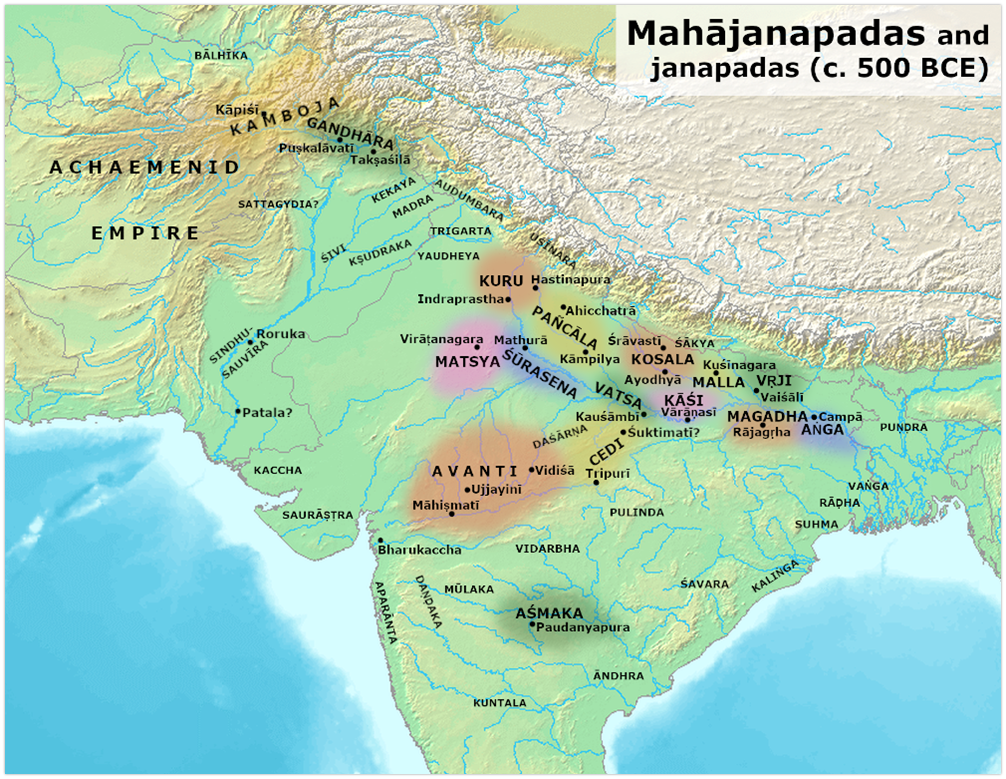 Magadha Empire consist of total 6 dynasties collectively known as The Magadhan Dynasties starting at Haryanka and ends at Kanva dynasty.
Magadha Empire consist of total 6 dynasties collectively known as The Magadhan Dynasties starting at Haryanka and ends at Kanva dynasty.
The four most powerful kingdoms, three – Kosala, the Vajji confederacy and Magadha — lay in the middle Ganga valley and the fourth, Avanti was in western Malwa.
The kingdoms that surrounded Magadha were Anga in the east, the Vajji Confederacy to the north, to its immediate west the kingdom of Kashi and further west, the kingdom of Kosala
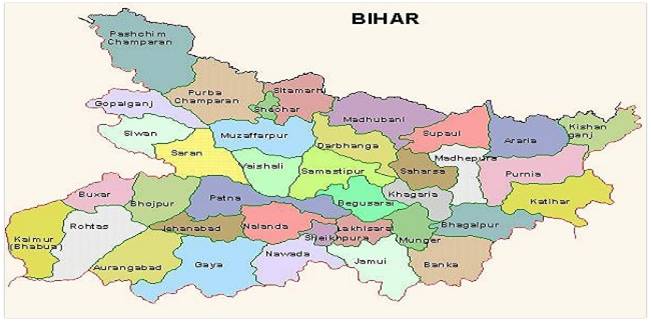
Magadha can be identified with the modern districts of Patna, Gaya, Nalanda and parts of Ara in the present-day state of Bihar
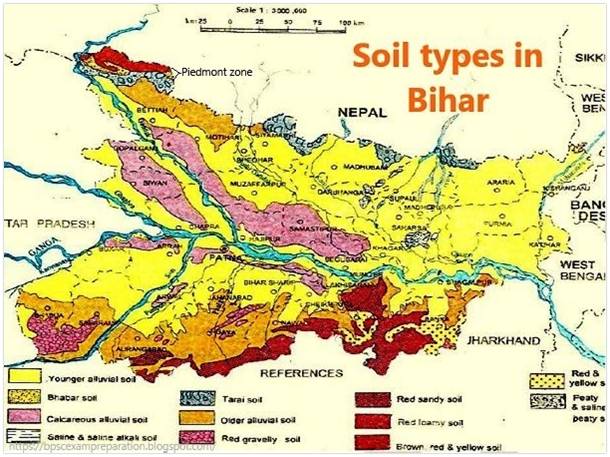
Magadha’s location was such that it had in its vicinity large tracts of alluvial soil. The soil could be easily cleared off the heavy overgrowth with the use of iron implements and proved extremely fertile
 Magadha was one of the few which used elephants on a large scale in the wars and thus had an edge over others. The elephants could be procured from the east. Nandas, according to the Greek sources, maintained 6000 elephants
Magadha was one of the few which used elephants on a large scale in the wars and thus had an edge over others. The elephants could be procured from the east. Nandas, according to the Greek sources, maintained 6000 elephants

The Magadhan Dynasties
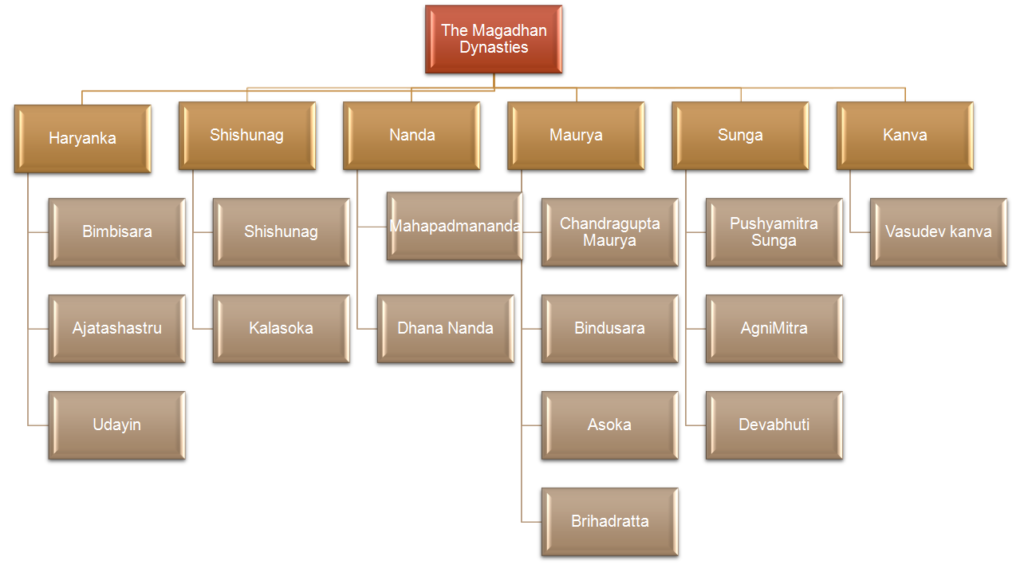
The Magadhan Dynasties
Magadha Empire – Haryanka Dynasty
The first important and powerful dynasty in Magadha was the Haryanka dynasty. Bimbisara (558 BC – 491 BC)
According to Buddhist chronicles, Bimbisara ruled for 52 years (544 BCE – 492 BCE).
Contemporary and follower of the Buddha. Was also said to be an admirer of Mahavira, who was also his contemporary
He started the practice of using matrimonial alliances to strengthen his political position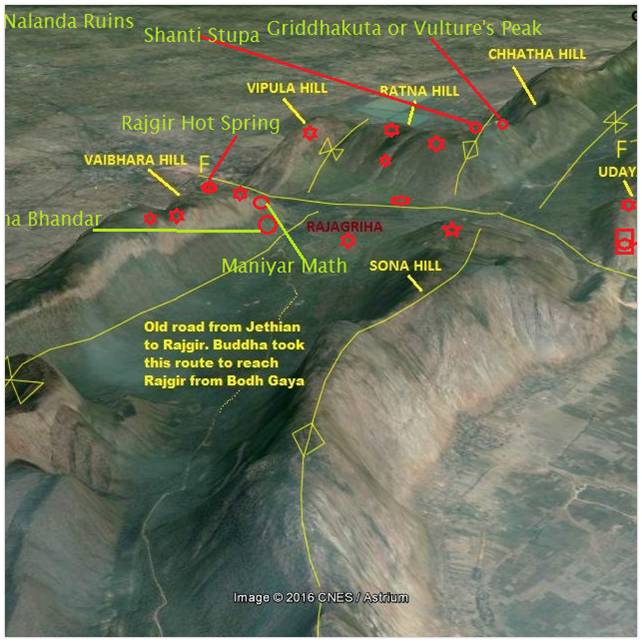
Strengthened his position by marriage alliances (Kosala, Lichhavi (Vaishali) & Madra clan (Punjab) • Acquired Anga under the viceroyalty of Ajatashatru (Born of Lichhavi Princess)
Bimbisaara set up his capital at Girivraja/Rajagriha (Rajgir).
It was surrounded by 5 hills, the openings of which were closed by stone walls on all sides.
This made Rajagriha impregnable
Magadha Empire – Haryanka Dynasty
Ajatasatru (492 BC – 460 BC)
Son of Bimbisara and Chellana.
- He killed his father and became ruler Embraced Buddhism.
- He convened the First Buddhist Council at Rajagriha just after the death of Buddha in 483 BCE
Won wars against Kosala and Vaishali.
The ruler of Avanti tried to invade Magadha and to thwart this danger Ajatashatru began the fortification of Rajgriha. However, the invasion did not materialise during his lifetime.

Magadha Empire – Haryanka Dynasty
Udayin (460 BCE – 444 BCE)
Son of Ajatasatru.
- Shifted the capital to Pataliputra (Patna).
- Last of the major Haryanka rulers.
- Udayin’s reign is important because he built the fort upon the confluence of the rivers Ganga and Son at Pataliputra. This was done because Patna lay in the centre of the Magadha Kingdom, which now extended from the Himalayas in the north to the hills of the Chotanagpur in the south.
Succeeded by three kings – Aniruddha, Manda and Nagadasaka
Magadha Empire – Shishunaga Dynasty
According to Sri Lankan chronicles, the people of Magadha revolted during the reign of Nagadasaka and placed an amatya (minister) named Sisunaga as the king. Sisunaga dynasty lasted from 413 BCE to 345 BCE
Magadha Empire – Shishunaga Dynasty
Shishunaga
Was the viceroy of Kasi before becoming king of Magadha.
- The capital was at Girivaraja.
- The most important achievement of Shishunaga was the destruction of the power of Avanti with its capital at Ujjain. This brought to an end the 100-year-old rivalry between Magadha and Avanti.
Avanti became a part of the Magadha empire and continued to be so till the end of the Mauryan rule.
- Later shifted the capital to Vaishali.
Magadha Empire – Shishunaga Dynasty
Kalasoka
Kalasoka shifted the capital to Pataliputra.
- He conducted the Second Buddhist Council at Vaishali. (383 BC)
- He was killed in a palace revolution that brought the Nanda dynasty to the throne.
Magadha Empire – Nanda Dynasty
This was the first non-Kshatriya dynasty and it lasted from 345 BCE to 321 BCE.
The first ruler was Mahapadma Nanda who usurped the throne of Kalasoka
Magadha Empire – Nanda Dynasty
Mahapadma Nanda
He is called the “first historical emperor of India.”
He is also called “Sarva Kashtriyantaka” (destroyer of all the Kshatriyas) and “Ekrat” (sole sovereign who destroyed all other ruling princes)
The empire grew under his reign. It ran from the Kuru country in the north to the Godavari Valley in the south and from Magadha in the east to Narmada on the west.
Also called Ugrasena in Pali texts because of his large army. The Nandas were fabulously rich and enormously powerful.
They maintained 200,000 infantry, 60,000 cavalry and 6000 war elephants. Such a huge army could be maintained only through an effective taxation system.
He added Kalinga to Magadha and brought an image of Jina as a victory trophy
Hathigumpha inscription of King Kharvela (Kalinga) refers to conquest of Kalinga by Nandas
The Hathigumpha Inscription is a seventeen line inscription in Prakrit language incised in Brahmi script in a cavern called Hathigumpha in Udayagiri hills, near Bhubaneswar in Odisha,
Magadha Empire – Nanda Dynasty
Dhana Nanda
He was the last Nanda ruler.
He is referred to as Agrammes or Xandrames in Greek texts.
Alexander invaded North-Western India during his reign, but he could not proceed towards the Gangetic plains because of his army’s refusal.
He became unpopular with his subjects owing to an oppressive way of extorting taxes. Also, his Sudra origins and an anti-Kshatriya policy led to a large number of enemies.
Finally, he was overthrown by Chandragupta Maurya along with Chanakya, who took advantage of the public resentment and established the Maurya Empire in Magadha.
He is credited with the invention of Nandopakramani (a particular measure).
Greek Invasion In India
Aexander the Great, also known as Alexander III or Alexander of Macedonia was born in 356 BCE in Pella, Macedonia. He died on June 13, 323 BCE in Babylon.
He was the king of Macedonia (336–323 BCE), who overthrew the Persian empire.
He spent most of his ruling years on an unprecedented military campaign through Asia and northeast Africa, and by the age of thirty, he had created one of the largest empires of the ancient world, stretching from Greece to northwestern India.
Just before the invasion of Alexander, there were many small rulers in northwest India, such as Ambhi of Taxila and Porus of the Jhelum region (Hydaspes)
Ambhi accepted the sovereignty of Alexander, but Porus waged a courageous but unsuccessful fight.
- Alexander was so fascinated by Porus’s combat that he gave him back his territory. Porus may have adopted lordship. The Battle of Hydaspes is the battle between him and Porus.
- After that, the army of Alexander crossed the Chenab river, annexing the tribes between Ravi and Chenab.
- His army, however, refused to cross the Beas river and revolted. After years of battles, they were exhausted.
- In 326 BC, Alexander was forced to retreat. He died in Babylon in 323 BC, aged 32, on his way back.
- The Greek Empire split in 321 BC after his death.
- Alexander left four of his generals in northwest India in charge of four areas, one of them being Seleucus I Nicator, who would later trade with Chandragupta Maurya for his territories in the Indus Valley.
Magadh Empire – Maurya Dynasty
Herodotus, Father of history, wrote that fabulous wealth of India attracted Alexander & moreover his interest in Geographical
The last of the Nanda rulers, Dhana Nanda was highly unpopular due to his oppressive tax regime.
Also, post-Alexander’s invasion of North-Western India, that region faced a lot of unrest from foreign powers.
Some of these regions came under the rule of the Seleucid Dynasty, founded by Seleucus Nicator I. He was one of the generals of Alexander the Great.
Chandragupta, with the help of an intelligent and politically astute Brahmin, Kautilya usurped the throne by defeating Dhana Nanda in 321 BC.
Magadh Empire – Maurya Dynasty
Chandragupta Maurya (324/21 – 297 BC)
In a series of battles, he defeated Dhana Nanda and laid the foundations of the Maurya Empire in about 321 BC
In 305 BC, he entered into a treaty with Seleucus Nicator in which Chandragupta acquired Baluchistan, eastern Afghanistan and the region to the west of Indus. He also married Seleucus Nicator’s daughter. In return, Seleucus Nicator got 500 elephants.
Chandragupta led a policy of expansion and brought under one control almost the whole of present India barring a few places like Kalinga and the extreme South
Megasthenes was the Greek ambassador at Chandragupta’s court.
He abdicated the throne in favour of his son, Bindusara, and went to Karnataka with Jain monk Bhadrabahu. He had embraced Jainism and is said to have starved himself to death according to the Jain tradition at Shravanabelagola.
Magadh Empire – Maurya Dynasty
Bindusara(297 – 272 BC)
Was called “Amitragatha” – Slayer of enemies by the Greeks •
Conquered Deccan up to Mysore •
Nicator’s successor Antiochus replaced Megasthenes with Deimakos as the Greek ambassador at Mauryan court •
Bindusara appointed his younger son Ashoka as the governor of Ujjaini •
Follower of Ajivaka philosophy (Everything is fate – predetermined)
Magadh Empire – Maurya Dynasty
Ashoka( 272 – 231 BC)
Ashoka was trained in military and weapons and showed great skills as an administrator when he was made the governor of Ujjain.
In the war of succession that followed Bindusara’s death in 272 BC, Ashoka emerged victorious aided by his father’s ministers.
When he became the king, he was said to be bad-tempered, ruthless and very cruel.
Once he became the king, he started expanding his empire by conquest. In the ninth year of his reign, he waged war with Kalinga (in present-day Odisha).
Ashoka was trained in military and weapons and showed great skills as an administrator when he was made the governor of Ujjain.
In the war of succession that followed Bindusara’s death in 272 BC, Ashoka emerged victorious aided by his father’s ministers.
When he became the king, he was said to be bad-tempered, ruthless and very cruel.
Once he became the king, he started expanding his empire by conquest. In the ninth year of his reign, he waged war with Kalinga (in present-day Odisha)..
Victorious war with Kalinga (8th reignal year) was the most important event of Ashoka’s reign & its effect on Ashoka has been described by Ashoka himself in Rock Edict 13
Conversion to Buddhism
The horrors of war disturbed him so much that he decided to shun violence for the rest of his life and turned to Buddhism.
Ashoka embraced Buddhism under the influence of Buddhist monk “Upagupta / Mogaliputra Tissa”
- Abandoned policy of physical conquest in favour of policy of cultural conquest (Bherigosha replaced by Dhammaghosa)
Ashoka’s conversion to Buddhism was gradual not immediate as he first became a sakya upasaka (Lay disciple) & 2½ years later became a bikshu (Monk) & gave up hunting •
Constituted Dhamma yatras to Sarnath, Bodh Gaya, Lumbini
Convened 3rd Buddhist council at Patliputra in 250 BC to strengthen sangha
Service to father & mother, Reverence to teachers, Practice of ahimsa & love of truth •
Prohibition of animal sacrifices & slaughter, Prohibition of festive gathering for meaningless rituals •
Humane treatment of servants by the masters & prisoners by the governmental officials •
Courtesy to relations & liberty to Brahmans with tolerance towards all religious sects •
Conquest through Dhamma instead of war •
Kandhar inscription speaks of success of his policies – hunters & fisherman gave up hunting & began practicing agriculture
Magadh Empire – Maurya Dynasty
Ashoka Admisnistration
- Central Government
- Highly centralized government with a steel frame of bureaucracy •
- Monarchy was supported by Kautilya however he did not stand for royal absolutism & advocated king to take advice of his ministry in running the administration
- A council of ministers called mantriparishad assisted the king in administration matters •
- Council consisted of Mantriparishadadhyaksha, Purohit, Mahamantri, Senapati & Yuvraj •
- Civil servants known as “Amatyas”/’’Adhyakshas’’ were appointed to look after day to day administration & their selection method was given by Kautilya
- Mantriparishadadhyaksha – head of all Amatyas
- Revenue Department •
- “Samharta”, the chief of revenue department was incharge of collection of all revenues of the department •
- “Sannidhata”, Chief custodian of state treasury & store house •
- Tax rate – 1/6 to 1/4 of produce
- Judiciary •
- Judicial chief justice of Supreme Court at capital in Mauryan times was known as “Dharmadhikari” •
- Civil courts – Dharmastheya •
- Criminal court – Kantakshodhana •
- Jails under separately appointed officers
- Provincial & Local administration
- Mauryan Empire was divided into 5 provinces
- Taxila – North
- Ujjain – West
- Suvarnagiri – South
- Kalinga(Tosali) – East
- Central province- Pataliputra
Provincial governors were appointed from the royal family (prince) •
District administration was under the charge of ‘’Pradeshika’’, assisted by “Rajukas” and “Yuktas” or subordinate officials •
Village administration was in hand of “Gramani” •
Head of 10 – 15 villages was called “Gopa”
Army •
Strong military kept to maintain the vast kingdom and frontiers •
Various sub committees to look after dept. like Navy, transport, provisions, horses, chariots, elephants •
6 lakh soldiers • 30,000 infantry • 9000 war elephants •
Spy system was well developed- Gudhapurusha
Magadh Empire – Maurya Dynasty
Art & Architecture
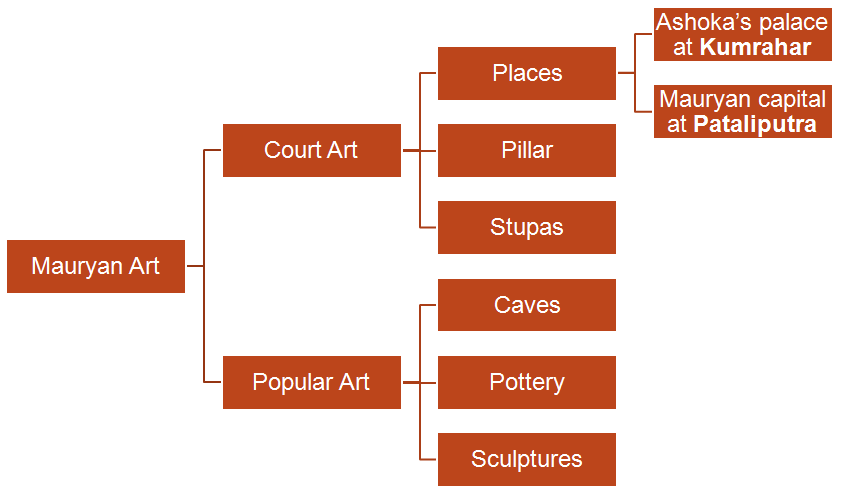
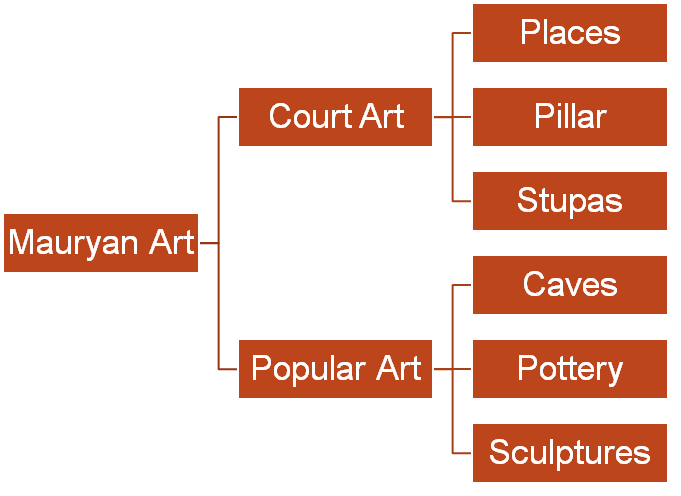
Mauryan Court Art: Implies architectural works (in the form of pillars, stupas and palaces) commissioned by Mauryan rulers for political as well as religious reasons.
Palaces: Greek historian, Megasthenes, described the palaces of the Mauryan empire as one of the greatest creations of mankind and Chinese traveler Fa Hien called Mauryan palaces as god gifted monuments.
Persian Influence: The palace of Chandragupta Maurya was inspired by the Achaemenid palaces at Persepolis in Iran.
Pillars: Ashoka pillars, (usually made of chunar sandstone), as a symbol of the state, assumed a great significance in the entire Mauryan Empire.
Objective: The main objective was to disseminate the Buddhist ideology and court orders in the entire Mauryan empire.
Language: While most Ashoka pillar edicts were in Pali and Prakrit language, few were written in Greek or Aramaic language also.
Language depends upon the Trade Route and Geographical Area
Pillar Edicts and Inscriptions
Ashoka’s 7 pillar edicts: These were found at Topra (Delhi), Meerut, Kausambhi, Rampurva, Champaran, Mehrauli:
- Pillar Edict I: Asoka’s principle of protection to people.
- Pillar Edict II: Defines Dhamma as the minimum of sins, many virtues, compassion, liberality, truthfulness, and purity.
- Pillar Edict III: Abolishes sins of harshness, cruelty, anger, pride, etc.
- Pillar Edict IV: Deals with duties of Rajukas.
- Pillar Edict V: List of animals and birds which should not be killed on some days and another list of animals which have not to be killed at all.
- Pillar Edict VI: Dhamma policy
- Pillar Edict VII: Works done by Asoka for Dhamma policy.
Minor Pillar Inscriptions
Rummindei Pillar Inscription: Asokha’s visit to Lumbini & exemption of Lumbini from tax.
Nigalisagar Pillar Inscription, Nepal: It mentions that Asoka increased the height of stupa of Buddha Konakamana to its double size.
Major Pillar Inscriptions
- Sarnath Lion Capital: Near Varanasi was built by Ashoka in commemoration of Dhammachakrapravartana or the first sermon of Buddha.
- Vaishali Pillar, Bihar, single lion, with no inscription.
- Sankissa Pillar, Uttar Pradesh
- Lauriya-Nandangarth, Champaran, Bihar.
- Lauriya-Araraj, Champaran, Bihar
- Allahabad pillar, Uttar Pradesh.

The Lion Capital of Ashoka is a sculpture of four Asiatic lions standing back to back, on an elaborate base that includes other animals. A graphic representation of it was adopted as the official Emblem of India in 1950.[1] It was originally placed on the top of the Ashoka pillar by the Emperor Ashoka, in about 250 BCE during his rule over the Maurya Empire. The pillar, sometimes called the Aśoka Column, is still in its original location, but the Lion Capital is now in the Sarnath Museum, in the state of Uttar Pradesh, India
The capital is carved out of a single block of polished sandstone, and was always a separate piece from the column itself.
It features four Asiatic Lions standing back to back.
They are mounted on an abacus with a frieze carrying sculptures in high relief of an elephant, a galloping horse, a bull, and a lion, separated by intervening spoked chariot-wheels.
The lion is symoblic of the 24th Tirthankara Mahavira’s symbol – the lion. Further, the Bull, the Elephant and the Horse are sequentially symbolic of the first three Tirthankaras – Rishabhanatha, Ajitanatha and Sambhavanatha respectively. 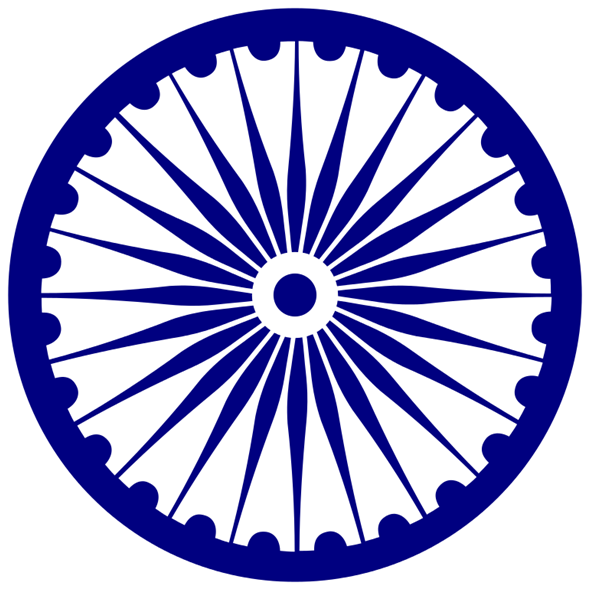
The Ashoka Chakra is a depiction of the Dharmachakra; a wheel represented with 24 spokes in Buddhism.
It is called so because it appears on a number of edicts of Ashoka, most prominent among which is the Lion Capital of Ashoka.
The most visible use of the Ashoka Chakra today is at the centre of the Flag of India (adopted on 22 July 1947), where it is rendered in a navy blue colour on a white background, replacing the symbol of charkha (spinning wheel) of the pre-independence versions of the flag.
Stupa: Stupas were burial mounds prevalent in India from the vedic period
Examples:
Sanchi Stupa in Madhya Pradesh is the most famous of the Ashokan stupas.
Piprahwa Stupa in Uttar Pradesh is the oldest one.
Stupas built after the death of Buddha: Rajagriha, Vaishali, Kapilavastu, Allakappa, Ramagrama, Vethapida, Pava, Kushinagar and Pippalivana.
Stupa at Bairat, Rajasthan: Grand stupa with a circular mound and a circumambulatory path









No comment